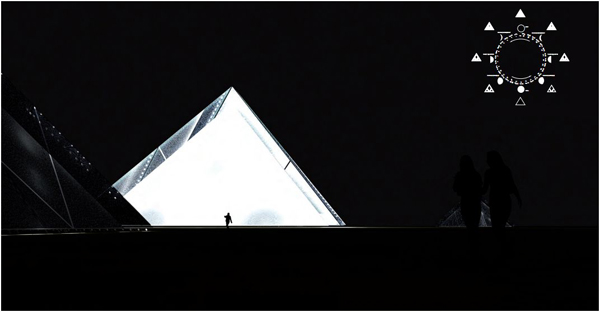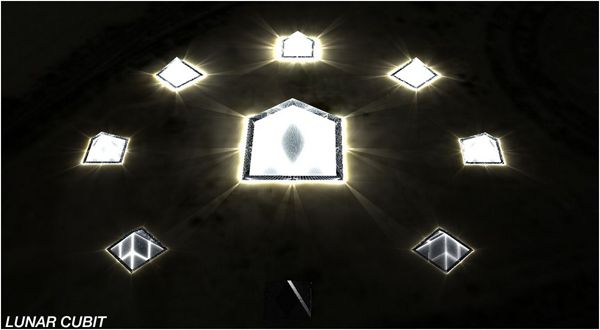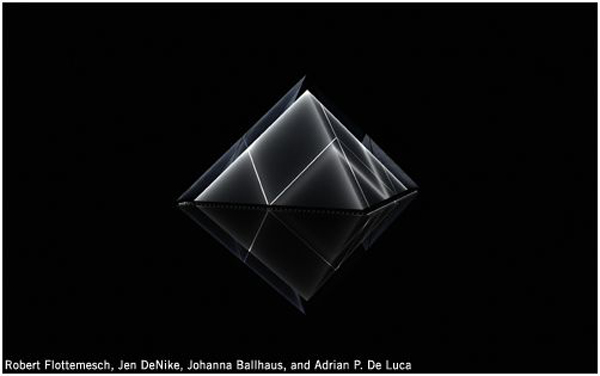The Lunar Cubit is the winning design by the New York based team of Robert Flottemesch, Jen DeNike, Johanna Ballhaus, and Adrian P. De Luca for the 2010 Land Art Generator Initiative (LAGI) design competition. Competing firms were tasked with fusing art and sustainable power generation in a pragmatic design for one of three predetermined locations in the United Arab Emirates. The Lunar Cubit will be fittingly located just outside Masdar City, a beacon of environmental friendliness and the proposed world’s first carbon neutral city.
The centerpiece of the design is a 50-meter high pyramid, the exterior of which is entirely covered by frameless solar panels. The main pyramid is surrounded by a circular arrangement of eight proportionately scaled 22-meter tall pyramids that are also wrapped with solar panels. Energy absorbed by the eight smaller pyramids is channeled through buried cables to the center pyramid where it will be connected to the Utility Grid. The Lunar Cubit is expected to produce enough energy to power 250 homes daily.
But the 2010 LAGI competition was to create a piece of artwork first, a power station second, so the design team drew from relevant Arabic science and culture for artistic inspiration. The pyramids arranged in a circular fashion will actually create an enormous lunar calendar, each of which will light up according to the moon’s phases. The lunar calendar is the basis for the Islamic or Muslim calendar, used by Muslims around the world to determine the proper time for religious observances and events. The proportions of the pyramids match those of the Great Pyramid at Giza and the even the name Cubit is a reference to the ancient Egyptian royal cubit, the first recorded measure of length.
The construction of the pyramids allow for wires and electronics to be housed inside the opaque pyramids. The designers planned this, along with the use of buried cables, to not only create a sleek and modern piece of art, but to foster direct physical engagement with the Lunar Cubit so a visitor can “literally reach out and touch a 1.74 megawatt utility scale power plant”.
The winning design was announced in late January and LAGI is currently seeking bids for construction. The Lunar Cubit is expected to pay for itself in less than five years.





















